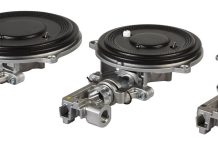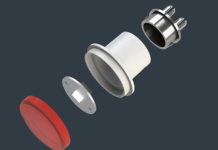Large household appliances have an important impact on the domestic energy balance and their consumption accounts for around 80% of the home electricity bill; for this reason, it is essential to replace old devices with new ones in high energy classes. The challenge of saving energy is particularly demanding in this field and involves the use of “innovative” electric motors in order to guarantee excellent performance, low noise and high efficiency.
Energy consumption is a highly topical issue, linked to the use of renewable sources and sustainable development. Saving energy, at home and in the office, is an important way to contribute to the fight against climate change and to the achievement of the sustainability goals set by Europe for 2030. The appliance industry consumes a large amount of raw materials, energy and resources that have a significant impact on the environment at every stage of the appliance’s life cycle: from the extraction of materials, to processing, production, transport, until the end of its use. For this reason, the Home Appliance sector can be considered a precursor to the launch of a circular economy model.
Today, the commitment of household appliance manufacturers to sustainability is aimed at designing appliances that are increasingly efficient from an energy and resource point of view, durable and repairable so that waste can be reduced.
Large household appliances have an important impact on the domestic energy balance and their consumption accounts for around 80% of the home electricity bill; for this reason, it is essential to replace old devices with new ones in high energy classes. Consumption is shown on the energy labels and many products today are also designed to operate in special “eco” cycles, set to reduce energy consumption during their operation.
In the case of the washing machine, the factor that most affects energy consumption is the heating of the water for washing, while the cost of the energy required to operate a dryer is very high. The air conditioner, on the other hand, is mainly responsible for the high energy consumption during the summer months.
Finally, the Home Automation systems allow to obtain efficient performance by combining and regulating the set of systems and equipment present in the building. An intelligent and integrated regulation system ensures energy savings.
An important role is taken on the electric motor which today benefits from the strong boost deriving from the innovative image and from the role of protagonist which it increasingly assumes not only in the industrial sectors and electric mobility but also in the field of household appliances.
The challenge of saving energy is particularly demanding in this field as well and involves not only the use of “innovative” electric motors but also a careful choice of materials used in order to guarantee excellent performance, low noise and high efficiency.
The traditional “universal motors” have been practically abandoned, mainly due to maintenance problems due to the presence of the collector-brush system. The choice is now oriented to the “brushless motors” with permanent magnets, the advantage of which is that they do not have windings on the rotor and therefore a reduction in losses, so they are very efficient motors with high power density. The drawback of permanent magnet motors is the cost of the magnets and their supply.
Innovative solutions have been proposed and particularly motor without windings and magnets on the rotor. These motors are called “synchronous reluctance motors” and constitute a new family of low-cost motors. The cost reduction represents a strategic point for the companies especially in a highly competitive sector such as that of household appliances. At present, the best performance is guaranteed by the permanent magnet motor as it is more efficient, more compact even if it has a higher cost and can be proposed for “high-end” applications.
The improvement in motor performance is also guaranteed by the use of the inverter which allows a fine speed regulation such as to make the appliance much more versatile and offer a wider range of services. The inverter today begins to spread in many household appliances also because the costs of the electronics have decreased considerably and its use allows to satisfy the growing needs of customers. Indeed, often, single-phase motors are not used and it is preferred to propose three-phase motors with the inverter in order to have several advantages in terms of efficiency, speed regulation and performance.
Another aspect to highlight is the tendency to reduce and simplify the system as much as possible, and “direct-drive” solutions are often proposed with the direct coupling of the motor to the load without other transmission elements.
An application of this kind is found precisely in washing machines, where in the past motors were connected with the drum by belts and pulleys. Today, in new washing machines are used solutions that provide for the motor coupling directly in the drum. This notably simplifies the whole mechanics, improves stability and allows decreasing noise.
The same thing happens in suction hoods, with the ever-rising presence of direct drive solutions, motors coupled with the inverter, controlled by suitable software enabling not only a better household appliance versatility but, most of all, more efficiency and energy saving.
The research in this sector is very intense but must not focus on the electric motor only but it must regard all components, both to identify the right compromise between lower-cost materials and performances, and to improve electronic components and software for control and diagnostics. In this way, it is possible to propose on the market innovative solutions of more and more performing and efficient electric motors and drives for the development of new household appliances that can assure a wider range of services and satisfy customers’ requirements.




